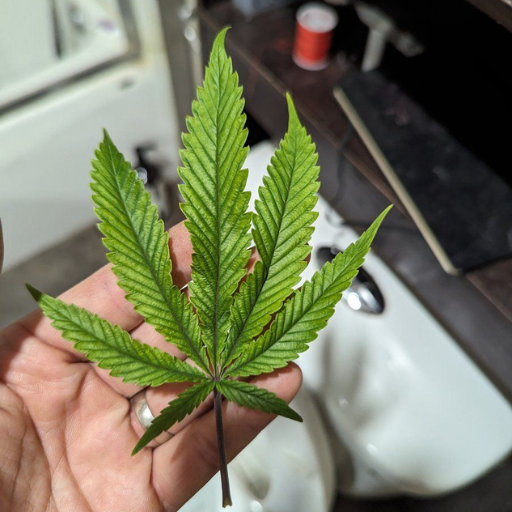The massive popularity of cannabis cultivation and its demand as a hobby has led to an explosion in the number of enthusiasts who are looking for ways to optimize the health and yield of plants. One such is Epsom salt, an inorganic magnesium sulfate compound. This guide will provide insight into using Epsom Salt in cannabis growing regarding nutrient uptake, deficiency prevention, and plant growth enhancement. Regardless of whether you have been farming marijuana for a long time or just starting off, understanding how to integrate Epsom salt into your gardening habit can go a long way towards producing healthier and more resilient marijuana plants. Let’s look at some science behind this simple yet effective supplement that can help you achieve more from your cultivation efforts.
What is Epsom Salt, and Why is it Important for Cannabis Plants?
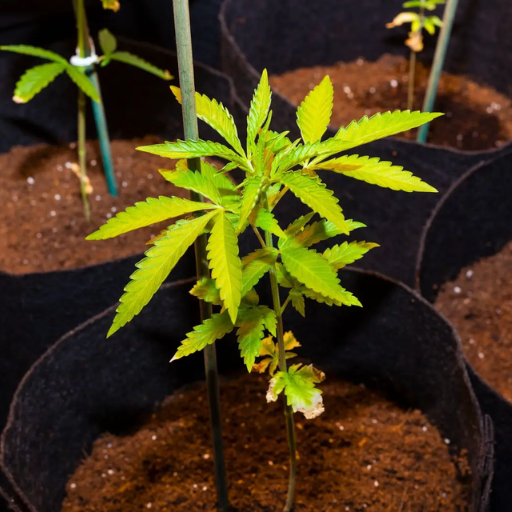
Understanding Epsom Salt: Magnesium Sulfate Explained
Magnesium sulfate, commonly referred to as Epsom salt (MgSO₄), is a chemical compound composed of magnesium, sulfur, and oxygen. It is vital to plant well-being, especially for cannabis, because this macronutrient- Mg – is essential in chlorophyll synthesis that makes photosynthesis possible. Conversely, sulfate helps in different metabolic processes within the plant. When absorbed into the system, magnesium enables cannabis plants to effectively utilize other nutrients effectively, thereby fostering better growth and survival under environmental stressors. Incorporating Epsom salt into your gardening routine can significantly improve the health and output of your marijuana crop.
The Role of Magnesium and Sulphur in Cannabis Growth
Magnesium and sulfur are two significant elements affecting the overall development of cannabis plants. Some key processes require magnesium:
- Chlorophyll Production: The primary function of magnesium is to enable photosynthesis by facilitating the production of chlorophyll, which converts sunlight into energy for the plant’s survival. It should typically constitute 0.2-0.5% of a plant’s dry weight.
- Nutrient Transport: Magnesium is responsible for conveying nutrient components across all sectors so that all essential elements effectively reach each part.
- Stress Resistance: By supporting tolerance capabilities, among other things, magnesium enables cannabis plants to persist through harsh conditions such as droughts or high levels of salinity, thus overall health improvement.
On the contrary, sulfur plays a critical role in cannabis’ well-being:
- Amino Acid Synthesis: Sulfur is one of the amino acids’ main components that play essential roles in various cell functions since they form proteins.
- Photosynthetic Efficiency: Like Mg, it contributes to chlorophyll formation and energy production via photosynthesis.
- Deficiency Symptoms: Inadequate amounts may result in leaf yellowing, particularly on young leaves, causing stunted growth generally when it falls below 0.1% of dry weight measured on a plant.
Appropriate quantities of magnesium and sulfur should be maintained during cannabis growth, usually about 0.2%- 0.5% for the former and at least 0.1% for the latter. By regularly testing soils and monitoring nutrient availability, growers can ensure that their crops receive enough essential elements to promote development and increase yields.
Benefits of Epsom Salt for Healthy Cannabis Plants
There are several reasons why Epsom salt is recommended in marijuana farming. First, Epsom salt’s magnesium sulfate promotes the general healthiness of plants by increasing chlorophyll production, thereby improving photosynthetic efficiency. This is especially useful during the vegetative phase, supporting vigorous growth. Additionally, I have realized that it enhances nutrient uptake, mainly nitrogen, thus making my fertilizer application more effective. Besides, Epsom salt helps me eliminate issues caused by a lack of nutrients, such as yellowing leaves, enabling my plants to grow even in unsuitable soil conditions. So far, including Epsom salts in how I care for my marijuana has improved plant health, thus, higher yields obtained from them.
How to Properly Use Epsom Salt for Cannabis Plants?
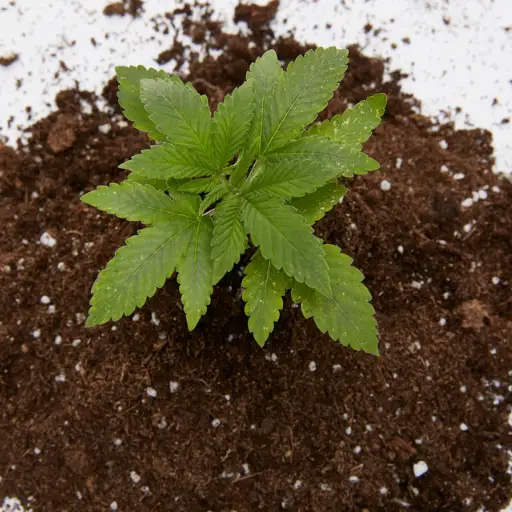
Effective Additional of Epsom Salt to Your Cannabis Plants
To effectively introduce Epsom salt into my cannabis growing routine, I have identified several critical practices. For instance, I ensure that I mix one tablespoon of Epsom salt per gallon of water so that the system can soak the plants evenly when watering. This solution is used at the vegetative stage and when there is a sign of magnesium deficiency. Besides, I avoid overusing it as excess magnesium may cause nutrient imbalances. To ascertain the level of nutrients in my soil, I conduct regular tests to adjust this application based on what my plants need. Lastly, after applying Epsom salts, my plants receive enough water for efficient absorption by their roots. These practices have helped me improve my plants’ health and growth rates.
How Much Epsom Salt Should You Use?
When using Epsom salt in my marijuana plantation, I usually use approximately one tablespoon for every gallon while watering them. This concentration ensures that my plants get enough magnesium and sulfur without exceeding their carrying capacities (limit). If an individual deficiency is addressed, I may slightly increase it to two tablespoons per gallon but closely monitor it to prevent nutrient imbalance in crops. I try to apply this mixture every four to six weeks when my plants are actively growing, considering soil analysis results and plant condition assessment methods used by observing farmers around me. Thus, referring back to these recommendations has seen a positive outcome with fewer signs of deficiencies in my marijuana crop.
Using Epsom Salt as a Foliar Spray
While incorporating foliar spray as part of the marijuana cultivation regime, using epsom salts has become an essential practice for me. Typically, a tablespoonful mixed with a whole gallon enables easy assimilation through leaves if sprayed on them directly, thus causing an accelerated uptake of magnesium and sulfur, especially during flowering when nutrient requirements intensify more than any other phase.
These are the parameters as recommended by the best gardening resources I have used:
- Concentration: One tablespoonful of epsom salt per gallon. This will reduce the burning of leaves and other potential dangers accompanying excessive nutrient supply.
- Frequency: After testing, I use foliar spray every four to six weeks, depending on what stage my plants are in. It takes advantage of peak nutrient intake during specific growth phases.
- Optimal Conditions: Many gardeners suggest spraying at dawn or just before evening falls to minimize evaporation and raise absorption rates.
By doing this, my leaf has improved in color and overall plant health, which confirmed that, indeed, it is practical; this practice has optimized my cannabis crop health.
What are the Signs of Magnesium Deficiency in Cannabis Plants?
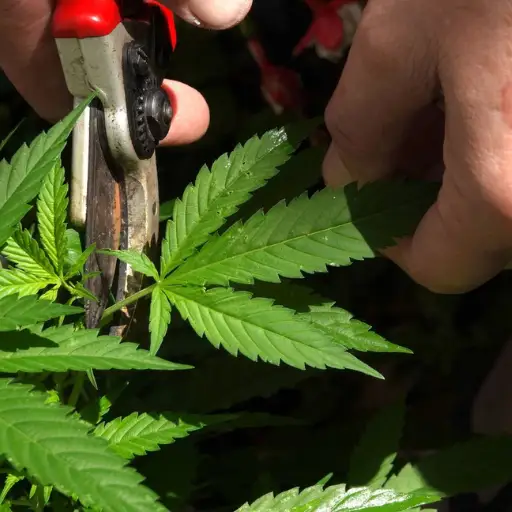
Indicators of Possible Magnesium Deficiency
In my experience, cannabis plants with magnesium deficiency have specific common symptoms. It is one of the first indications I have observed where leaves in mature plants start turning yellow from their tips and edges, which later become visible in the middle part of the leaf. Also, these leaves may show a mosaic-like pattern with green and yellow patches becoming more marked. Another symptom is leaf tip burn, which means curling of the leaf edges. Lastly, when not attended to, there can be reduced overall plant growth and productivity due to magnesium deficiency. Therefore, paying attention to such indicators helps me act quickly, keeping my plants healthy.
How Epsom Salt Can Treat Magnesium Deficiency
After researching this, I realized that Epsom salt contains magnesium sulfate, which can be a valuable remedy for magnesium deficit in cannabis plants. During my regular watering schedules, I usually dissolve around one or two spoonfuls of Epsom salt in a gallon full of water before applying it as a solution. This increases the soil’s magnesium level besides enhancing the absorption of other essential nutrients. In most cases, once I use Epsom salt to nourish my crops again, leaves will stop turning yellow, plant development will improve significantly, and its health will improve altogether. It is an inexpensive yet easy way to ensure they are provided enough of this mineral necessary for their survival.
Preventing Nutrient Deficiencies Using Epsom Salt
From what I’ve seen so far, using Epsom salt regularly has proved to be a proactive way to avoid nutrient deficiencies among marijuana plants. This way, my plants continuously benefit from an unbroken supply of magnesium required for photosynthesis and general good health. Furthermore, some reliable sources have taught me that when Epsom salts are applied at the beginning of the growing season, a strong nutrient foundation is laid down, thus minimizing the occurrence of shortage in the future; usually, a tablespoonful goes into a gallon of water from which it may be poured regularly once a month in case of heavy rains to keep an ideal nutrient balance and guarantee an excellent growth through the life stages. This method has constantly led to green plants that can resist diseases better, making it one of the essentials in my gardening activities.
When Should You Apply Epsom Salts to Cannabis Plants?

Optimal Timing for Maximum Absorption
To come up with the best results in my application of Epsom salts on my marijuana plants, I concentrate on the critical timing parameters that are taken from the most popular online resources.
- Early Morning or Late Afternoon: According to many gardening experts, the best timeframes to apply Epsom salt are early morning and late afternoon, when ambient temperatures are low. This reduces evaporation while allowing plants to absorb nutrients more efficiently without being stressed by heat.
- During Vegetative Stage: One such moment I have found suitable is during the vegetative stage, when I use Epsom salt to promote healthy growth, especially when the leaves start turning yellow due to magnesium deficiency. This ensures that they will have all the nutrients they need as they progress in their growing stages.
- Post-Watering: Applying this ingredient after watering thoroughly helps maintain moist soil conditions, which enhances nutrient uptake. Professionals recommend mixing one tablespoon of Epsom salt per gallon of water and applying it at this time for optimal nutrient absorption.
By following these time management techniques, I allow my crops to benefit from the magnesium and sulfur found in Epsom salts, making them healthier and more resilient.
Frequency of Epsom Salt Applications for Healthy Growth
From what I know about my cannabis plants, applying Epsom salts bi-monthly is very effective for maintaining good health. This way, some magnesium and sulfur are always available without overwhelming them. If symptoms like yellowing leaves or slow growth rate indicating a lack of minerals appear, immediate supply may be made. Nonetheless, regular use during growing seasons with major emphasis during the vegetative stage has consistently supported stronger and vigorous growth of male and female crops grown under specific climatic conditions.
Seasonal Considerations for Using Epsom Salt
When using any epsom salt dose on your cannabis plant, you should consider the impact every season can have on them. When preparing for the growing season in spring, I mix Epsom salt into my soil to ensure that nutrients are already available. Towards the end of summer, with higher temperatures, is a time of potential stress for my plants. Thus, I may need to apply Epsom salt as a foliar spray every few weeks to enhance magnesium levels and keep the leaves healthy. As fall approaches and harvest looms ahead, I gradually scale back on applications so there is no effect on taste but rather make sure all plants finish out strong without excess nutrients. Using Epsom salts maximizes its benefits for optimum plant health and growth at each stage throughout its life cycle.
What are the Potential Risks of Using Epsom Salt on Cannabis Plants?
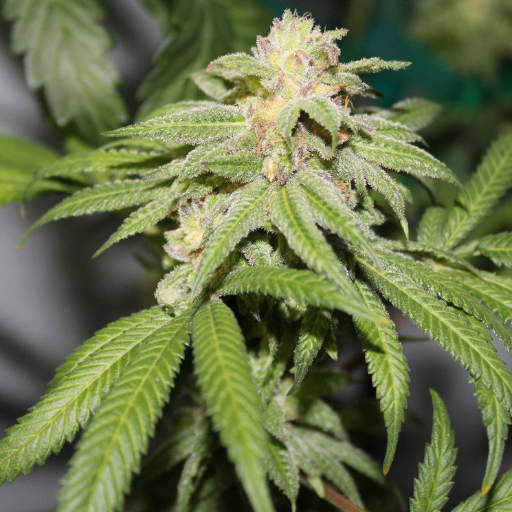
Understanding the danger of overusing
In terms of the use of Epsom salt in my marijuana plants, I have come to learn that too much is not good. Overuse can cause excess magnesium from Epsom salts, which might interfere with absorbing other essential nutrients like calcium and potassium. This imbalance may be evident in several ways, such as leaf curling or a general decline in plant health. Also, excessive utilization can accumulate salts within the soil, which would negatively influence root functioning and overall plant growth. Therefore, to mitigate this risk, I constantly monitor nutrient levels in my soil and adjust accordingly, thus ensuring that I provide them with appropriate combinations for healthy development.
Balancing Epsom Salt with Other Vital Nutrients
To achieve a proper balance between Epsom salt and other vital nutrients, I ensure that my cannabis plants are fed on a well-rounded nutrient regimen. Although Epsom salt provides magnesium and sulfate, it is necessary to add nitrogen, phosphorous, and potassium, indispensable for growth and flowering, respectively, to make a comprehensive fertilization strategy. As needed, I test my ground regularly, adjusting nutrient levels so that not only am I adding Epsom salts but also giving my plants well-balanced foods rich in essential elements. Introducing organic inputs such as composts and worm castings will also increase overall nutrient content, leading to robust development while avoiding imbalances associated with reliance on one source only. By doing this, I maintain an equilibrium that makes my marijuana plants flourish during their whole life cycle.
How to Avoid Common Mistakes with Epsom Salt Use
To avoid common mistakes when using Epsom salt, the first thing to do is to measure the amounts accurately. So generally for about every gallon of water one tablespoon is used depending on what the needs are for my crops to prevent overapplication-induced nutrient imbalances. Furthermore, it should be applied at the right stages of growth, such as the vegetative or flowering ones, when magnesium is in great demand. Before I use it, I fully dissolve Epsom salt into water so the plants can absorb it well. Moreover, I always need to look out for my plants, and should there be any signs of stress or lack of nutrients, I may have to change my approach. This would help confirm whether I am providing enough nutrients and avoid treating Epsom salt alone as the sole source of nutrients.
Reference sources
Frequently Asked Questions (FAQs)
Q: What is Epsom salt, and how does it benefit cannabis plants?
A: Epsom salt is a natural mineral compound of magnesium and sulfate. Using Epsom salt for cannabis growth helps provide essential nutrients like magnesium, crucial for photosynthesis and overall plant health.
Q: How does magnesium in Epsom salt support the growth of cannabis plants?
A: Magnesium in Epsom salt plays a vital role in the process of photosynthesis, aiding in the conversion of light into energy. This ensures that cannabis plants receive an important nutrient for optimal growth and development.
Q: How much Epsom salt should I use for my cannabis plants?
A: A standard recommendation is to dissolve one teaspoon of Epsom salt in a gallon of water and use it to water your cannabis plants. This helps to provide a balanced supply of magnesium and sulfate.
Q: Can I apply Epsom salts directly to the soil or leaves of cannabis plants?
A: Epsom salts can be applied directly to the soil and leaves. When applied as a foliar spray, they allow the plant to quickly absorb magnesium. For soil application, they help enrich the soil with important nutrients for cannabis plants.
Q: Should Epsom salt be used during all stages of cannabis growth?
A: Epsom salt is an excellent addition to your feeding regimen throughout the various stages of cannabis growth, from seedlings to mature plants. However, it’s particularly beneficial during the vegetative and flowering stages when nutrient uptake is critical.
Q: Can Epsom salt help improve the quality of buds in cannabis plants?
A: Yes, using Epsom salt can enhance the quality of buds by ensuring that the plants receive adequate magnesium, an essential nutrient for bud development and overall plant health. This leads to healthier, more robust buds.
Q: Are there any risks associated with using Epsom salt for cannabis plants?
A: While Epsom salt is generally safe and beneficial, overuse can lead to nutrient imbalances or salt buildup in the soil. It’s essential to use it in moderation and monitor the health of your plants.
Q: Can Epsom salt benefit mother plants in cannabis cultivation?
A: Epsom salt for cannabis will allow mother plants to thrive by supplying essential magnesium. This helps maintain healthy growth and ensures the best quality plants for cloning.
Q: Is it better to use organic ingredients like Epsom salt for growing cannabis?
A: Adding organic ingredients like Epsom salt is beneficial as it provides natural and essential nutrients for cannabis plants, promoting healthier growth and reducing the dependence on synthetic fertilizers.
Q: How do cannabis growers typically incorporate Epsom salt into their feeding schedule?
A: Cannabis growers usually incorporate Epsom salt by dissolving it in water and applying it during regular watering or as a foliar spray. Consistent use throughout the growing cycle can help plants grow strong and healthy.



